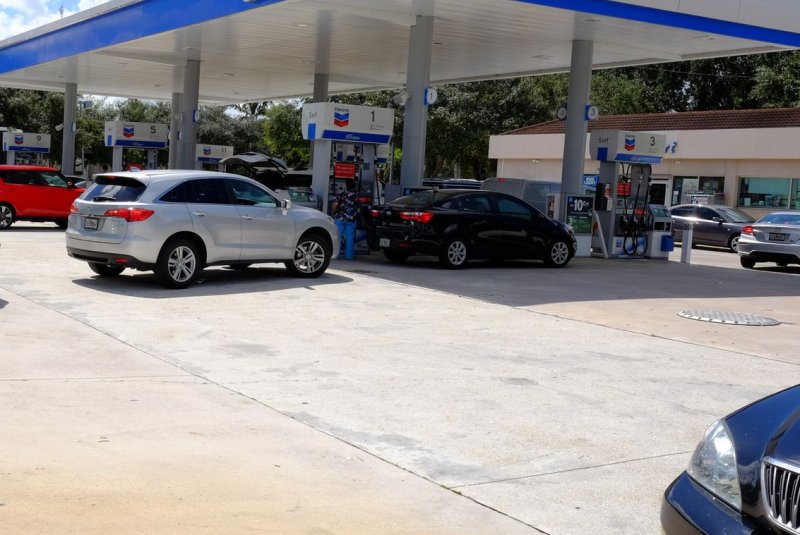Retail gasoline prices in the United States kept lower by relatively light consumer demand, market reports find. Photo by Gary I Rothstein/UPI |
License Photo
May 2 (UPI) -- Lower seasonal demand and a steady move lower for crude oil prices means U.S. consumers are seeing prices drop at the gas station, retail analyses find.
Motor club AAA reports a national average retail price for a gallon of regular unleaded gasoline at $2.38, down slightly from the previous day and 1.4 percent, or about 3 cents per gallon, less than last week.
"One year ago, the country was experiencing higher consumer demand and prices were increasing," a weekly market report from AAA found. "Fast forward to today, consumers are still experiencing higher gas prices over last year due to the OPEC agreement, but we are not seeing substantial increases at the pump due to increased gasoline inventories and low demand across the country."
Parties to an agreement coordinated by the Organization of Petroleum Exporting Countries in January started curbing production in an effort to prop up a market depressed last year by oversupply. OPEC last year was defending a market share with higher production and U.S. shale oil output was strong, though 2017 has seen the United States in particular gain traction as markets react positively to OPEC's efforts. That's kept crude oil prices trading in a narrow band around $50 per barrel in recent sessions, though the price had climbed near $60 earlier this year.
Spring gasoline prices fluctuate as refineries transition from a winter blend of gasoline to a summer blend, which is more expensive to make because of the additional steps needed to prevent evaporation during warmer months.
The West Coast remains the most expensive market in the country, with California holding top honors for the Lower 48 with a state average price of $3. Gas prices are higher than last year, but AAA found the market is flush with inventory and prices are stable as a result.
"On the West Coast, gasoline inventories are substantial, about 2.7 million barrels higher than the five-year average," its report read. "The inventory spike is likely a result of refiners' robust gasoline production in March and a strong April import schedule."
The Great Lakes region, meanwhile, remained the most volatile market in the region, with Indiana taking the lead with a 13 cent per gallon decline in gasoline prices from last week. AAA said that market too has high gasoline inventories and demand is relatively flat.
Higher oil prices could be on the horizon, however, as a recent market slump has curbed investments on global exploration and production, which could led to a decline in worldwide supplies in the future. Short-term, however, separate analysis from Dan McTeague, a senior analyst for GasBuddy.com, found consumers could still benefit from current market trends.
"With more refineries coming back online from their semi-annual maintenance, the decline in average pump prices is poised to repeat itself again for the week ahead," he said in an emailed report. "Healthy gasoline inventories coupled with moderate demand for gasoline, are two factors converging to keep gas prices in check, likely until Memorial Day."















